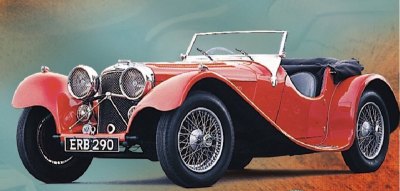 Until the eve of World War II, the global sports car market was dominated by European mainland car makers such as Alfa Romeo, Bugatti, Mercedes, Delahaye, Hispano-Suiza and Talbot-Lago. By the time the war ended, these companies were either killed or seriously damaged. As a result, British sports car maker Jaguar and MG emerged to be the new winners. In fact, Jaguar showed a promising future well before WWII. William Lyons founded the Swallow Sidecar Company in 1922 as a producer of sidecars, i.e. those single-wheel passenger compartments that attached to the side of motorcycles. However, it didn’t take the talented guy too long to upgrade his company to a sports car maker. By 1935, Lyons launched his first sports car called SS90. Its mechanical design had nothing innovative, but it offered good performance and handling at a very competitive price. Moreover, its styling - penned by Lyons himself - is widely regarded as one of the most beautiful pre-war cars. The SS90 had a top speed of 90 mph thanks to a 2.6-liter straight-six engine. By 1936, the engine was upgraded to 3.5 liters and 125 horsepower. This boosted its top speed to a true 100 mph. As a result, the car was renamed to SS100, and the Jaguar brand was used for the first time. SS100 kick-started the golden period of Jaguar, which would be fueled by XK120, C-type, D-type and E-type in the following years. |